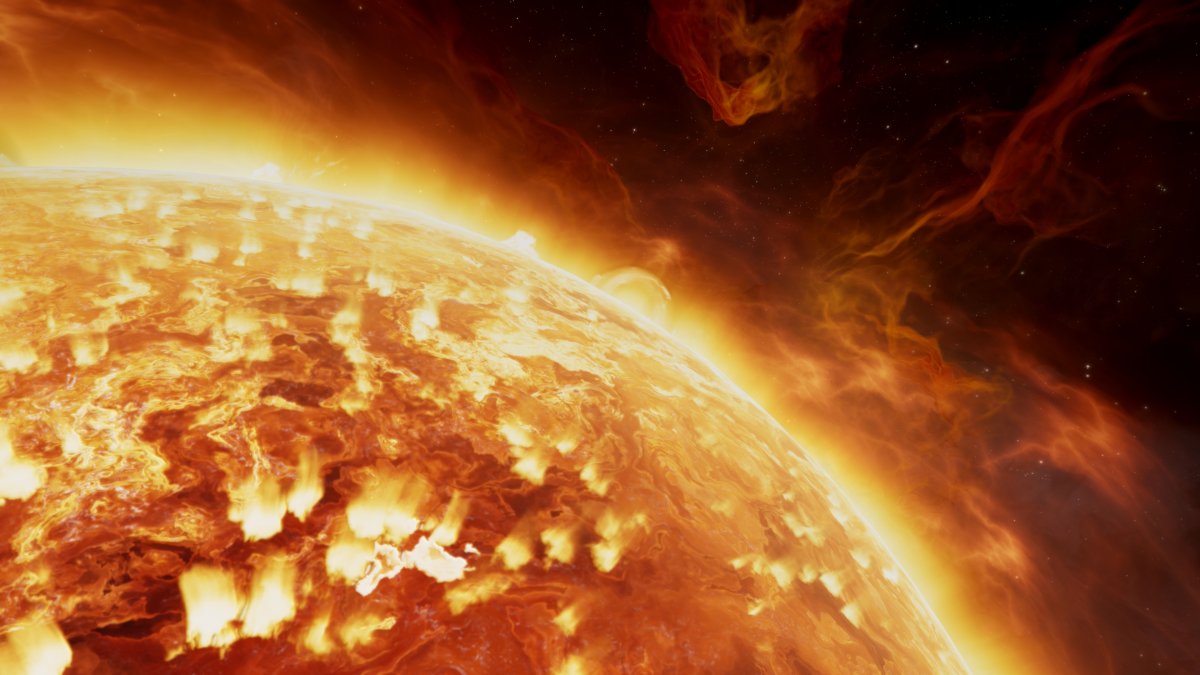A solar storm is hurtling toward the Earth after a powerful X-class solar flare shot out from the sun on New Year's Eve. Experts have warned of radio signal disruptions and bright auroras starting Tuesday morning.
"The storm should hit hard, but last less than a day," space weather physicist Tamitha Skov said in a post on X (formerly Twitter).
The super #solarstorm launched during a X4.98-flare New Year's Eve will clip Earth. NOAA prediction shows impact early January 2 (UTC). The storm should hit hard, but last less than a day. Expect bright, but short-lived #aurora plus #radio signal disruptions on Earth's nightside. pic.twitter.com/xuH9uhOcSK
— Dr. Tamitha Skov (@TamithaSkov) January 1, 2024
Solar flares are powerful ejections of electromagnetic radiation, usually in the form of X-rays, and are caused by a sudden release of energy from the sun's surface. They are usually emitted from sunspots and occur when magnetic fields in these areas become entangled or reorganized.
These outbursts of energy can be classified according to their strength. "The weakest are the A-class flares, followed in intensity by the B-class, C-class, M-class—these are moderate—and the X-class," Gonzalo José Carracedo Carballal, an astrophysics researcher at Madrid's Instituto Nacional de Técnica, previously told Newsweek.

Solar flares are the largest explosive events in our solar system, and, as Jesse Woodroffe, a program scientist in the Heliophysics Division at NASA headquarters, previously told Newsweek, they are "around a million times stronger than a nuclear bomb." However, a nuclear explosion is highly localized in both time and space, while the energy of a solar flare is spread out across vast distances.
Even so, Sunday's X-class flare was the strongest on record since the start of the current solar cycle, which began in December 2019. Heightened activity is expected to last until October.
Solar flares of this magnitude are typically accompanied by large expulsions of solar plasma, known as coronal mass ejections or CMEs. When directed toward Earth, they can reach our planet in a matter of hours, although slower ejections can take several days to arrive.
Luckily, thanks to the Earth's magnetosphere, ionosphere and atmosphere, our planet is largely protected from the effects of these projections. However, they can still result in geomagnetic storms and power cuts.
The solar propulsion originated from sunspot region AR3536, which does not directly face our planet. Therefore, the resulting CME is likely to be largely directed away from Earth. However, because of the sheer magnitude of the recent flare, scientists have warned that a G1-class geomagnetic storm is likely when the CME arrives.
Sky-watchers have also been alerted to the possibility of bright but short-lived auroras.
Do you have a tip on a science story that Newsweek should be covering? Do you have a question about solar storms? Let us know via science@newsweek.com.
Uncommon Knowledge
Newsweek is committed to challenging conventional wisdom and finding connections in the search for common ground.
Newsweek is committed to challenging conventional wisdom and finding connections in the search for common ground.
About the writer
Pandora Dewan is a Senior Science Reporter at Newsweek based in London, UK. Her focus is reporting on science, health ... Read more
To read how Newsweek uses AI as a newsroom tool, Click here.








